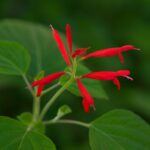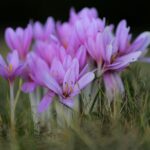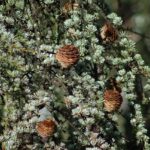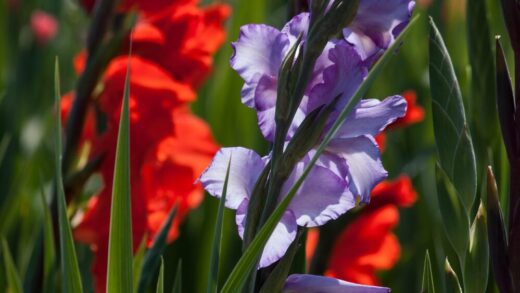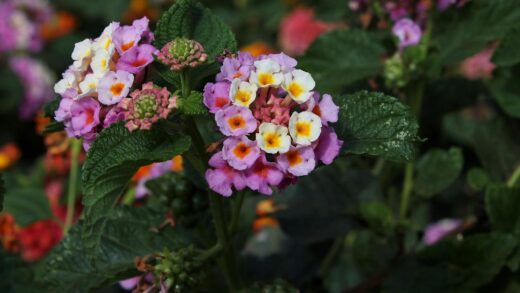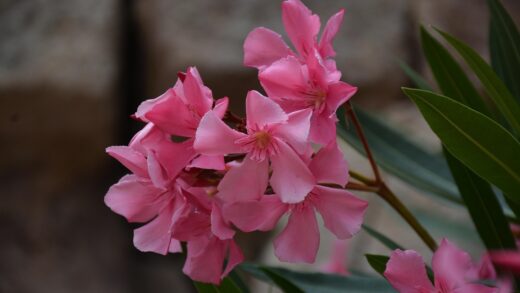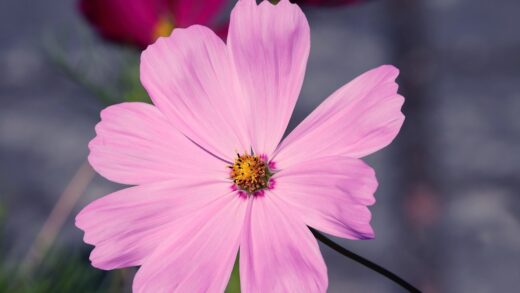Globe amaranth is cherished in gardens around the world for its vibrant, long-lasting blooms, but it is fundamentally a tender annual in most gardening climates. This means that its life cycle is typically completed within a single growing season, from germination to seed production, before the plant succumbs to the first hard frost of autumn. Consequently, for the majority of gardeners, the concept of overwintering the plant itself is not a practical consideration. The end-of-season approach focuses instead on garden cleanup and on preserving the plant’s legacy for the following year through seed saving, a simple and rewarding process that ensures a continuous supply of these delightful flowers.
As a plant native to warmer, tropical regions, globe amaranth lacks the natural hardiness to survive freezing temperatures. When exposed to a frost, the foliage and stems will quickly turn black and wilt, signaling the definitive end of its growing season. There are no special protective measures, such as mulching or covering, that can successfully shield this tender annual from the cold and allow it to survive the winter outdoors in temperate zones. The plant’s roots are not equipped to go dormant and survive in frozen ground, so once the top growth dies, the entire plant is lost.
Therefore, the primary “overwintering” task involves removing the dead plant material from the garden after the first killing frost. This is an important aspect of good garden hygiene. Clearing away the spent annuals helps to prevent any potential diseases or pests from finding a place to shelter over the winter. The removed plants can be safely added to a compost pile, where they will break down and contribute to the creation of nutrient-rich organic matter for future gardening seasons.
While the plant itself does not overwinter, its genetics are easily preserved through its seeds. This is the true method of ensuring that globe amaranth returns to your garden year after year. The process of collecting, drying, and storing seeds is the most practical form of “overwintering” for this species. It allows the gardener to become an active participant in the plant’s life cycle, carrying its potential through the cold months in a small, protected packet, ready to be sown again when the warmth of spring returns.
Understanding its annual nature
It is crucial for gardeners to understand that globe amaranth is classified as a tender annual in climates that experience freezing winters, such as those in USDA hardiness zones 7 and below. This classification means the plant is genetically programmed to grow, flower, produce seed, and die all within one year. It does not possess the biological mechanisms to enter a dormant state and survive through a cold winter like a perennial plant does. Its roots are fleshy and susceptible to cold damage, and they will not regenerate new growth in the spring after being frozen.
More articles on this topic
This annual life cycle is a direct result of the plant’s evolutionary origins in tropical and subtropical regions of Central America, where it does not encounter freezing temperatures. In these native habitats, it may behave as a short-lived perennial, but this is not its reality in most temperate gardens. Accepting its annual nature is the first step in managing it correctly at the end of the season. Instead of attempting to protect it from the inevitable, gardeners should embrace its role as a seasonal performer that provides a spectacular show from summer to frost.
The end of the season for globe amaranth is marked definitively by the first hard frost. Unlike some hardy annuals that can tolerate a light frost, globe amaranth is quite sensitive to the cold. As soon as temperatures drop sufficiently, the water within the plant’s cells freezes, causing irreparable damage to the cell walls. This results in the characteristic blackened, wilted appearance of a frost-killed plant. At this point, the plant’s life processes have ceased, and it will not recover.
This understanding should guide the gardener’s expectations and actions. There is no need to invest time or resources in trying to cover the plants or apply heavy mulch in an attempt to save them. The most productive end-of-season activities are to enjoy the flowers for as long as possible up to the first frost, and then to shift focus to seed collection and garden cleanup, preparing the space for the next year’s planting endeavors. This approach aligns with the natural life cycle of the plant.
Saving seeds for next season
The most effective method for “overwintering” globe amaranth is by saving its seeds. This is a simple process that guarantees you will have a fresh supply of plants for the following spring. The best time to collect seeds is in the late summer or early autumn, after the flower heads have been on the plant for a long time and have started to dry out and lose some of their vibrant color. Choose flowers from your healthiest and most productive plants to ensure you are selecting for the best genetic traits.
More articles on this topic
To harvest the seeds, simply snip off the entire dried flower head with a pair of scissors or pruning shears. It is best to do this on a dry, sunny day to ensure the flower heads are not damp. Place the collected flower heads in a paper bag or on a tray and bring them indoors to a warm, dry, and well-ventilated location to finish drying completely. This final drying period, which may take a week or two, is crucial for preventing the seeds from molding in storage.
Once the flower heads are thoroughly dry and papery, it is time to separate the seeds from the chaff. This can be done by simply crumbling the flower heads between your fingers over a piece of paper or a shallow bowl. The tiny, whitish seeds are encased in a fluffy material, which can make them a bit difficult to isolate. You can try to winnow the chaff away by gently blowing on it, or you can simply store the seeds mixed with some of the fluff, as it will not harm their viability.
After separating the seeds, place them in a small paper envelope or a tightly sealed glass jar. It is very important to label the container with the plant name and the year of collection. Store the seeds in a cool, dark, and dry place until the following spring. A refrigerator or a cool basement are ideal locations. Properly harvested and stored globe amaranth seeds can remain viable for several years, providing a sustainable and cost-free way to enjoy these beautiful flowers season after season.
End-of-season garden cleanup
After the first killing frost has brought the growing season for globe amaranth to an end, the final step is to clean up the garden bed. Removing the dead plant material is an important task that should not be overlooked. Leaving the blackened, frosted plants in the garden over winter can look untidy and may also create a welcoming environment for unwanted pests or diseases to overwinter, potentially causing problems for the plants you intend to grow in that space next year.
The process of removal is straightforward. The dead plants can usually be pulled up from the ground quite easily, roots and all. If the stems are thick or the roots are particularly stubborn, a garden fork can be used to loosen the soil around them first. Once the plants are removed, shake off any excess soil from the roots and add the plant debris to your compost pile. Globe amaranth breaks down well in a compost system, contributing valuable organic matter that will eventually enrich your garden soil.
Clearing the bed of the spent annuals also provides an excellent opportunity to prepare the soil for the winter. After the plants have been removed, you can lightly cultivate the soil surface to clear out any late-season weeds that may have sprouted. This is also a perfect time to apply a layer of compost or shredded leaves over the garden bed. This organic layer will act as a winter mulch, protecting the soil from erosion and allowing soil organisms to begin breaking it down, enriching the soil for the spring planting season.
Completing this final cleanup task leaves your garden looking neat and tidy for the winter months. It provides a sense of closure to the growing season and is a crucial first step in preparing for the next. By removing the old plants and amending the soil, you are not just tidying up; you are actively investing in the health and success of your future garden, ensuring that the space will be fertile and ready for the new globe amaranth seeds you have so carefully saved.
Attempting to overwinter indoors
While globe amaranth is an annual, some gardeners with a long winter and a desire for a challenge may attempt to overwinter a particularly favored plant indoors. This is not a common or recommended practice, as the plant is not well-suited to indoor conditions and the success rate can be low. However, if you wish to try, you must act before the first frost. Select your healthiest, most compact plant and carefully dig it up, making sure to get as much of the root ball as possible.
Pot the plant into a container that is just large enough to accommodate its root system, using a high-quality, well-draining potting mix. Water it thoroughly and move it to a sheltered location outdoors, such as a covered porch, for about a week to help it acclimate to being in a pot. Before bringing it inside, inspect the plant carefully for any pests, such as aphids or spider mites, that may be hiding on the leaves. It is a good idea to spray it with insecticidal soap as a preventative measure to avoid bringing an infestation into your home.
Once indoors, the plant will need the sunniest location you can possibly provide. A south-facing window that receives at least six to eight hours of direct sunlight is essential. Without sufficient light, the plant will quickly become weak, pale, and leggy. You will also need to be very careful with watering. Allow the top inch of the soil to dry out completely before watering again, as the risk of overwatering and causing root rot is much higher indoors where conditions are less forgiving.
Do not expect the plant to flower profusely or grow vigorously throughout the winter. The goal is simply to keep it alive until it can be moved back outdoors in the spring. It will likely lose some leaves and may require some trimming to maintain a decent shape. In the spring, after all danger of frost has passed, you will need to gradually harden the plant off to outdoor conditions before planting it back in the garden. For most, the effort required for this process far outweighs the benefit, making seed saving the superior method of preservation.










